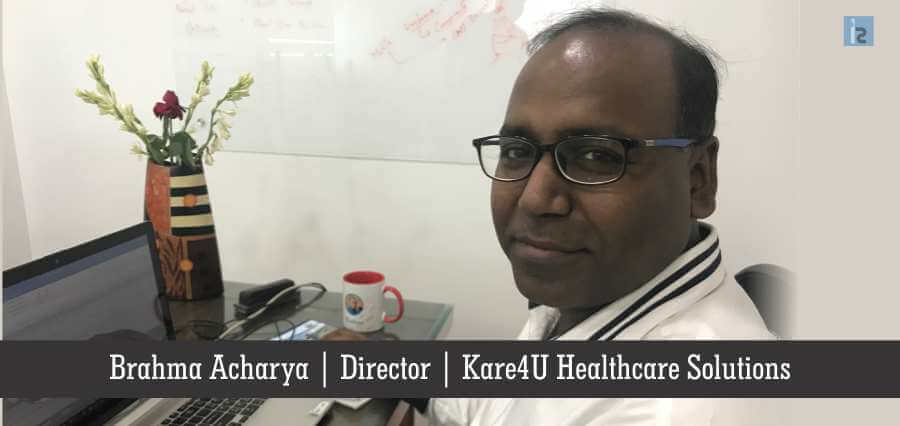Like everything, Healthcare is on the verge of a major technological upgrade. There is a myth that healthcare is slow to adopt technology. This couldn’t be further from truth. Let’s look at some of the recent cases:
– Researchers have successfully created a 3-D printed heart. The models are being extensively used by surgeons to pre-plan their surgeries
– Remote Robotic Surgery is becoming more commonplace nowadays
– Smartphone accessories along with wearable’s are revolutionizing the health of the consumer like never before
Having said that, there is a vast dichotomy in technology adoption between healthcare providers depending on demography, regulations, and experience. In a country like India, where the doctor to patient ratio is abysmal, doctors don’t get the desired time to enter health records to an Electronic Health Record (EHR) system. For the same reason, it is also difficult for the Government to bring in regulations. Added to that, technology infrastructure in the rural sector leaves much to be desired for rapid adoption. As such, a different approach is required to improve IT adoption in healthcare in developing countries.
Approach
Simplicity is the ultimate sophistication – Leonardo Da Vinci
Owing to the paucity of time for Doctors and the unfamiliarity of technology, a different approach is required for mass adoption. There are scores of IT healthcare companies who focus on creating sophisticated solution without the end user in mind. That would work in some cases but for the solution to catch the imagination of doctors and patients, the solution must be simple and easy to use. Here we look at some key features to be considered for increased adoption.
Good UI and Great UX
People often confuse between UI and UX and speak about them in the same breath. Good color combination, consistent themes, subtle screen transitions and icons constitute a good UI. However, more than having a good UI, it’s crucial to have a great UX. The user should find things in an intuitive manner. As an example, in the appointment screen, past appointments should be shown near-by. Any warnings regarding the patient should be shown along with the health records. It might sound easy but, a domain expert is required in designing screens and functionality.
Conversational Interface
Having conversation comes natural to humans. That’s the most prevalent form of communication. With rapid improvement in voice recognition and natural language processing, it’s now possible to have a variety of conversational interface built into the system. As an example, the system should be able to understand normal spoken language (ex: the patient is suffering from fever; open the relevant template), interpret its meaning and serve the user (Opening the EHR system with relevant details filled in). Systems can also understand the spoken language and respond to users so that busy individuals (like doctors) can directly speak to the mic and get the necessary help from the system.
Notification and Minimalistic UI
Healthcare is complicated and as such the systems supporting it is complex. Having said that, enough thought should be put in to make the experience of the end user easy. Rather than showing all information and actions in big screens, notification and contextualization should drive them. As an example, when the Patient checks in to doctor’s cabin; the doctor is automatically shown the screen with Patient’s data populated (rather than the doctor trying to figure the patient and open it). The relevant section of the patient can be open and suitable suggestions could be already shown. Developing such a customized representation might be involved but Healthcare start-ups including Kare4U have been successful in creating such systems.
Search
Search has become ubiquitous in today’s digital world. In the world of Google, searching in natural language has become a habit of the consumers. A good search result is also one of the most effective ways to engage the users of the system. Owing to the complex nature of healthcare, users would like to have a magic search bar where they can search anything from the patient details to daily reports. An advanced search algorithm can even go to the extent of context stitching (search result based on previous searches) and showing results in the drop-down directly.
AI and ML driven
Artificial Intelligence (AI) and Machine Learning (ML) significantly help in enhancing the value of the system. Whether it’s doing analytics on the health data and suggesting suitable prescriptions or recognizing handwritten records and interpreting as a human does, AI/ML systems are enhancing the usability of the system. An AI/ML system can be used to train on doctor’s existing prescriptions and suggest in filling up EHR data. Similarly, a well-trained system can detect fraud transactions and prevent revenue leakage.
Conclusion
Challenges open opportunities to innovate. Whereas implementing healthcare system in a developing country like India might be difficult, it’s an opportunity for the IT Healthcare companies to innovate and excel. As start-ups it’s our responsibility to up the level and help the healthcare entities to adopt the system.
About the Author
Brahma Acharya is the Director of Kare4U Healthcare Solutions. Technology being his passion, he started Kare4U with an intention to provide healthcare industry the much needed boost that it needs. It’s been his constant endeavor to bring all the relevant technologies to Kare4U and give the customer’s that leading edge in technology.
Accelerating IT Adoption in Indian Healthcare Background


